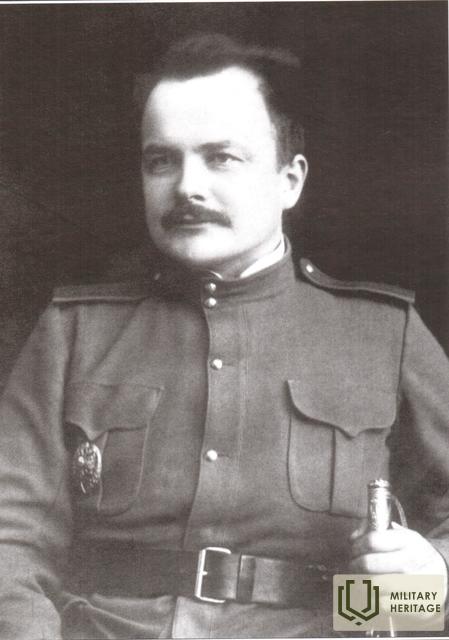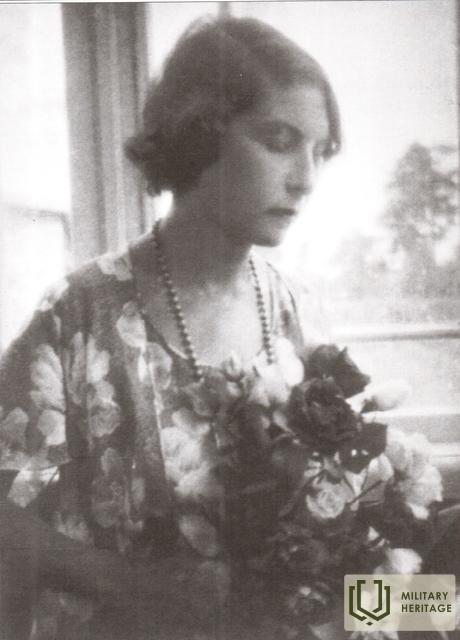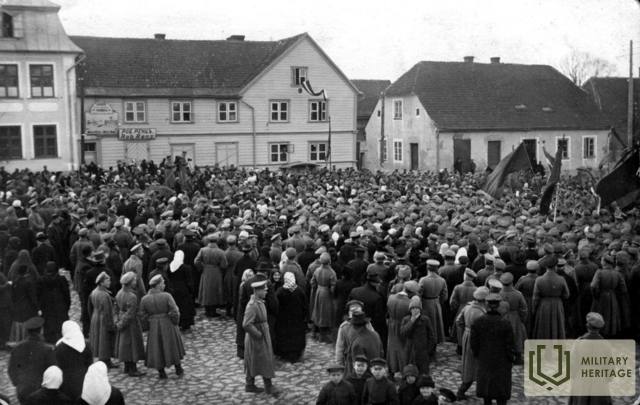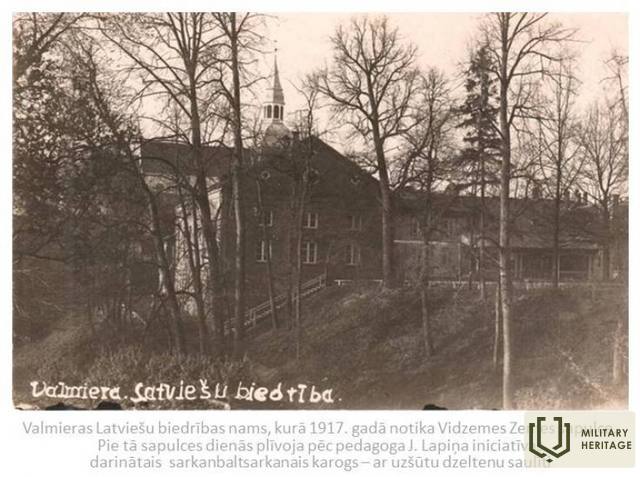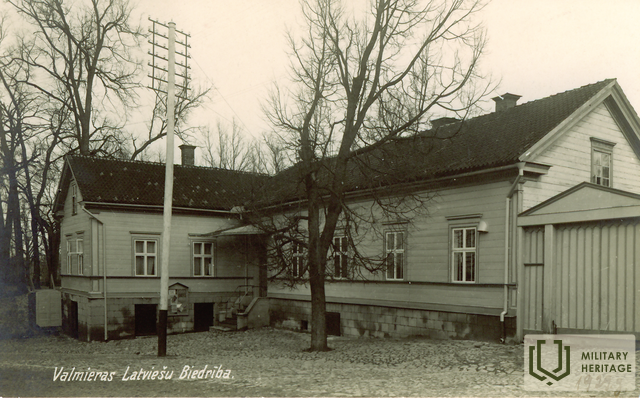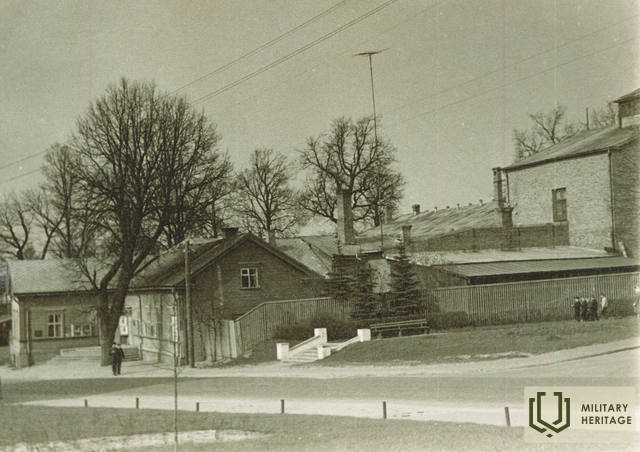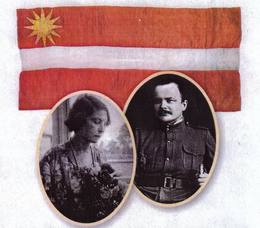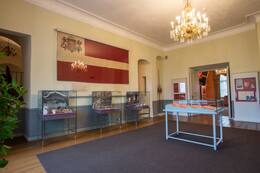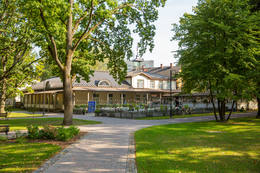Jānis Lapiņš ir pirmasis Latvijos raudonos, baltos ir raudonos vėliavos projektas
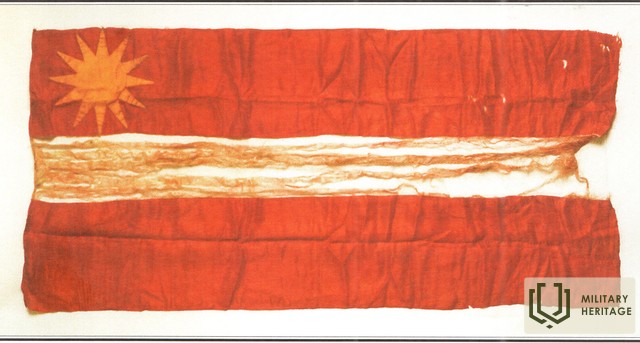
Latvijos nacionalinė vėliava buvo sukurta Pirmojo pasaulinio karo metais. 1915 m., kurdami latvių šaulių batalionų vėliavas, kai kurie menininkai vėliavų dizainui pasiūlė raudoną, baltą ir raudoną spalvas. Švietėjo ir žurnalisto Jānio Lapinio sukurtą raudonai baltai raudoną vėliavą 1916 m. antroje pusėje pagamino jo mokinė, Valmieros pabėgėlių prieglaudos mokytoja Marianna Straumane. Tai pirmoji žinoma ir realiai pagaminta Latvijos nacionalinė vėliava, išlikusi iki šių dienų.
Vienas aršiausių Latvijos nepriklausomybės idėjos populiarintojų buvo Veselavoje gimęs pedagogas ir žurnalistas Jānis Lapiņš (1885-1941), nuo 1915 metų rudens dirbęs Valmieros prekybos mokykloje. Be įprastų mokyklos darbų, turiu tvarkyti pabėgėlių reikalus. Pabėgėlių paramos organizacijos „Šiaurės pagalba“ biuras įsikūręs už pilies griuvėsių, viename geriausių mieste Marshnerio name. Kuržemės pabėgėliai su didele pagarba pagerbė Lapiną kaip pabėgėlių karininką, prisiminė rašytojas Kārlis Eliassas (1899-1985), gimęs Kauguri valsčiuje ir tuo metu buvęs Latvijos mokyklų asociacijos prekybos mokyklos mokinys: ""
Jānis Lapiņš daugelį sužavėjo Latvijos raudonai-balta-raudonos vėliavos idėja. Šią vėliavą 1916 m. antroje pusėje jam pagamino (išsiuvinėjo) Valmieros pabėgėlių vaikų prieglaudos mokytoja Marianna Straumane (1896 -1985), vėliau tapusi J. Lapinio žmona. 1917 m. Lapiņš Valmieroje organizavo Liaudies universitetą ir dalyvavo visuose svarbiausiuose viešuosiuose renginiuose. Mokytojo namuose Aleksandro gatvėje ilgesnį ar trumpesnį laiką gyvena arba lankosi latvių kultūros darbuotojai Jānis Akuraters, Kārlis ir Lizete Skalbes, Pauls Dāle, Ernests Blanks, Linards Laicens ir kt.
Kaip įrodymas augančiam latvių pasitikėjimui savimi, 1917 metų kovą per Vidžemės žemės susirinkimą virš Valmieros latvių draugijos pastato suplevėsavo raudona, balta ir raudona vėliava. Valmieroje (Vecpuišu parke) vykusiame naujosios Latvijos valstybės paskelbimo susitikime dalyvavo ir vienas aršiausių raudonos, baltos ir raudonos nacionalinės vėliavos populiarintojų - Jānis Lapiņš! Savo kreipimesi į Valmieros moksleivius jis vaizdinga kalba pasakė, kad „visos senovinės latvių svajonės pildosi, bet turi vėl iškilti ir nuskendusieji Šviesos rūmai“. Valmieros mokyklų jaunimas neįsivaizdavo, kokie pranašiški Lapinio žodžiai pasirodys, nes deklaruotą Latvijos laisvę vis tiek teks iškovoti!
Vertinga relikvija XX amžiaus 2–3 dešimtmečiais buvo saugoma Lapinių šeimoje, vėliau, sovietmečiu, buvo kruopščiai slepiama. Vokiečių okupacijos metais Marianna su dukra kartu su gamykla, kurioje dirbo, evakavosi į Vokietiją, žinoma, abi pasiėmė vėliavą. Po karo, grįžus į Latviją, daug metų teko slėpti. Būtent šią vėliavą, kuriai tuo metu jau buvo per 80 metų, 1997 metais Marianos ir Jānio Lapinių dukra Lija Poga padovanojo Cėsių muziejui. Pastebėtina, kad pirmoji kronikoje minima vėliava buvo pagaminta Cėsiuose 1279 m. kaip ideologinis mūsų Latvijos vėliavos prototipas, o pirmoji tautinė vėliava pasiūta ir pagaminta Valmieroje 1916 m.






Informacinė ir iliustracinė medžiaga iš Pumpuriņš T. Raudona, balta ir raudona – Latvijos vėliavos spalvos. Cėsis, 2000. ir iš Valmieros muziejaus rinkinio.
https://www.valmiera.lv/lv/kultura/latvijai_100_/brivibas_stasti/janis_lapins/
Susijusi laiko juosta
Susijusios temos
Susijusios vietos
Memorial place of J. Lapiņš, the author of the first flag of Latvia
It is located in "Lejas Pintuli", Veselava parish, Priekuļi district.
A memorial to Jānis Lapiņas, the author of the pre-flag of Latvia, can be seen...
Cēsis history and art museum in the New Castle of Cēsis
The Cēsis History and Art Museum is located in the very centre of the Old Town of Cēsis, in the New Castle. The museum holds a permanent exhibit of history and interiors named ‘Cēsis, a Symbol of Latvian History’, with two thematic sections: the exhibit ‘Red-White-Red Flag in the History of Cēsis and Latvia’ explains the history of the Latvian national flag from the 13th to 20th centuries, the approved national symbol, the flags of Latvian rifle battalions and the traditions of using national colours during the Latvian War of Independence. The exhibit ‘Cēsis and the Latvian War of Independence’ focuses on the founding of the Cēsis Company in December 1918, the joint battle efforts of Estonians and Latvians in the 1919 Battles of Cēsis, the time when...
Bachelor Park and Concert Hall "Valmiera"
The park is located in the center of Valmiera.
In 1914, eight enterprising residents of Valmiera decided to set up a park with a non-alcoholic buffet and a book table on the outskirts of the city at that time - that's how the history of the Bachelor Park began...




